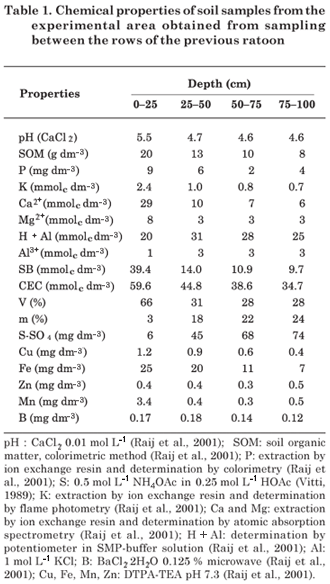The response to B in agricultural systems of sugar cane is still an unexplored issue; B application has however recently been widely publicized and used with a certain degree of frequency. The use of 10B-labeled fertilizers may further contribute to clarify this practice. With the objective of evaluating sugar cane use of B (10B) derived from fertilizer (boric acid), an experiment was conducted under field conditions in the 2005/2006 growing season. The experiment consisted of the installation of microplots (2 x 1.5 m) where 4 kg ha-1 B (boric acid with 85.95 % in 10B atoms) dissolved in water was applied 90 days after planting (May 2005). The solution was applied to the soil on both sides of the plant row at a distance of 20 cm. After harvest (June 2006) the B content and 10B abundance in % atoms in all parts of the sugar cane plants (stalks, dry leaves, tips and roots) were determined. Results showed that the total B accumulated was 471 g ha-1 in the entire plant (35 % in the stalks, 22 % in the dry leaves, 9 % in the tips and 34 % in the roots). The sugar cane plants used on average 14 % of the total accumulated B in the above-ground part (44 g ha-1) and 11 % in the roots (19 g ha-1), totaling 13 % in the entire plant (63 g ha-1). The recovery of 10B-fertilizer by sugar cane plants was low, around 2 % of the total applied amount.
planted cane; stable isotopes; micronutrients; Saccharum spp




